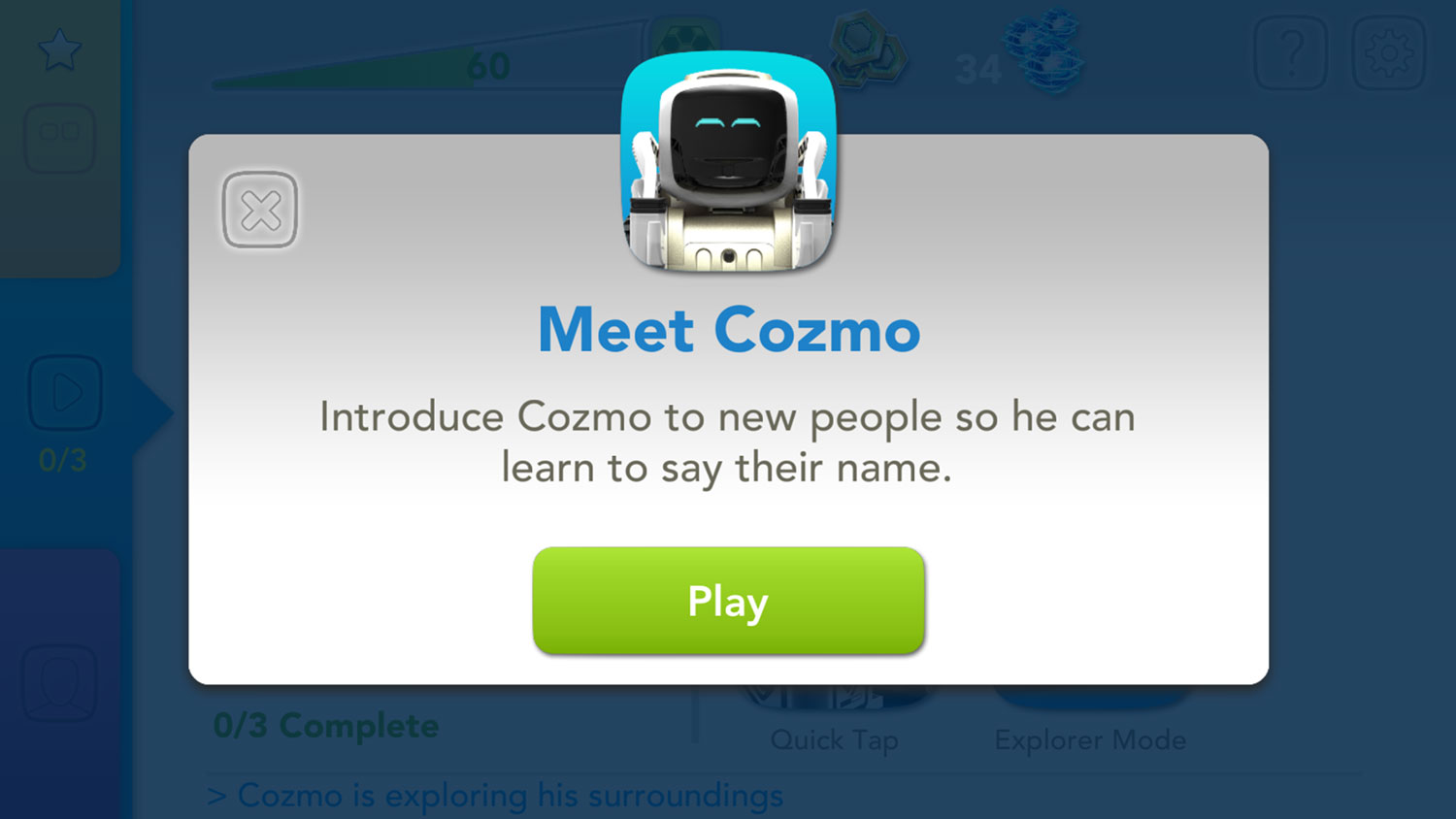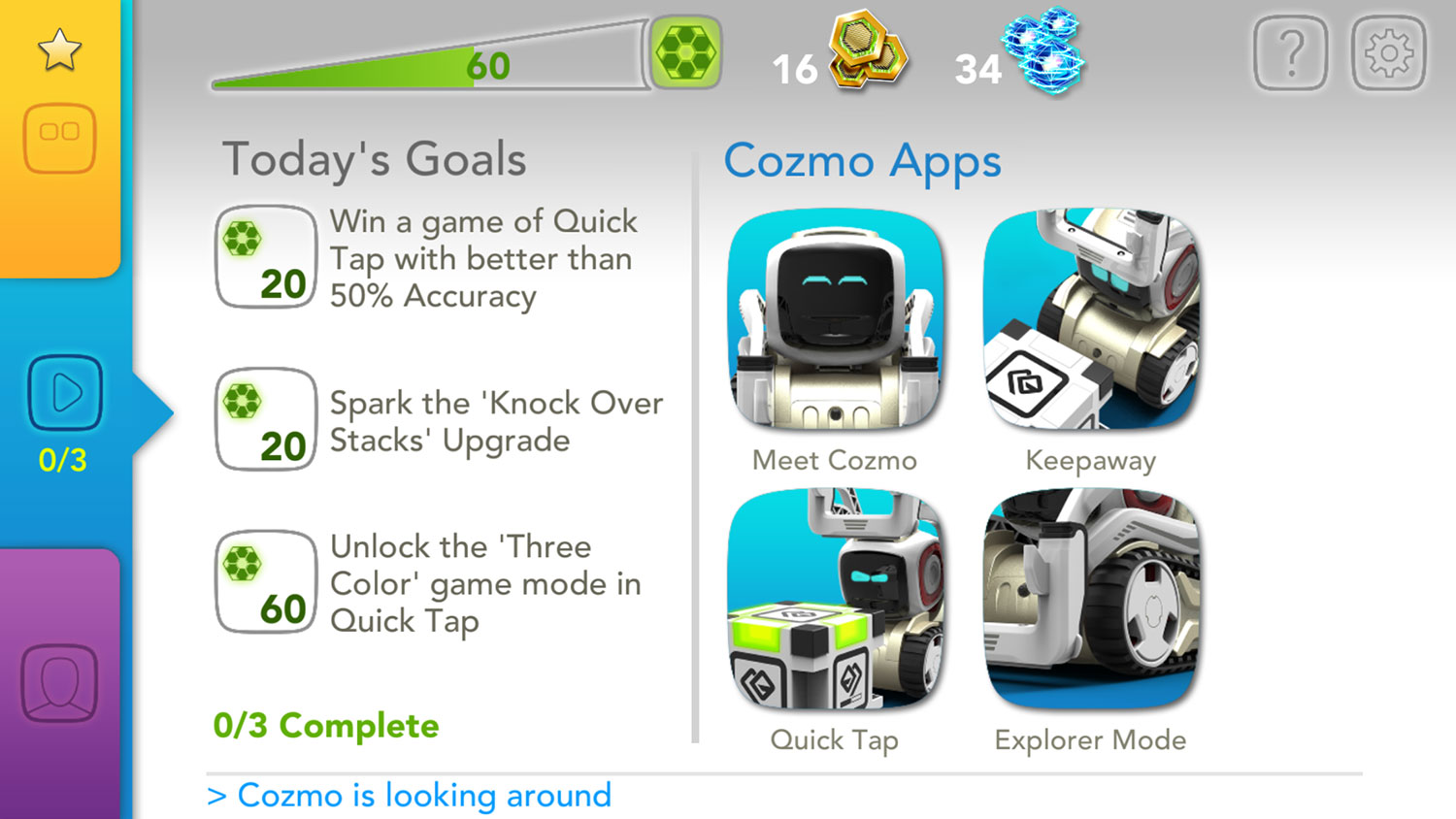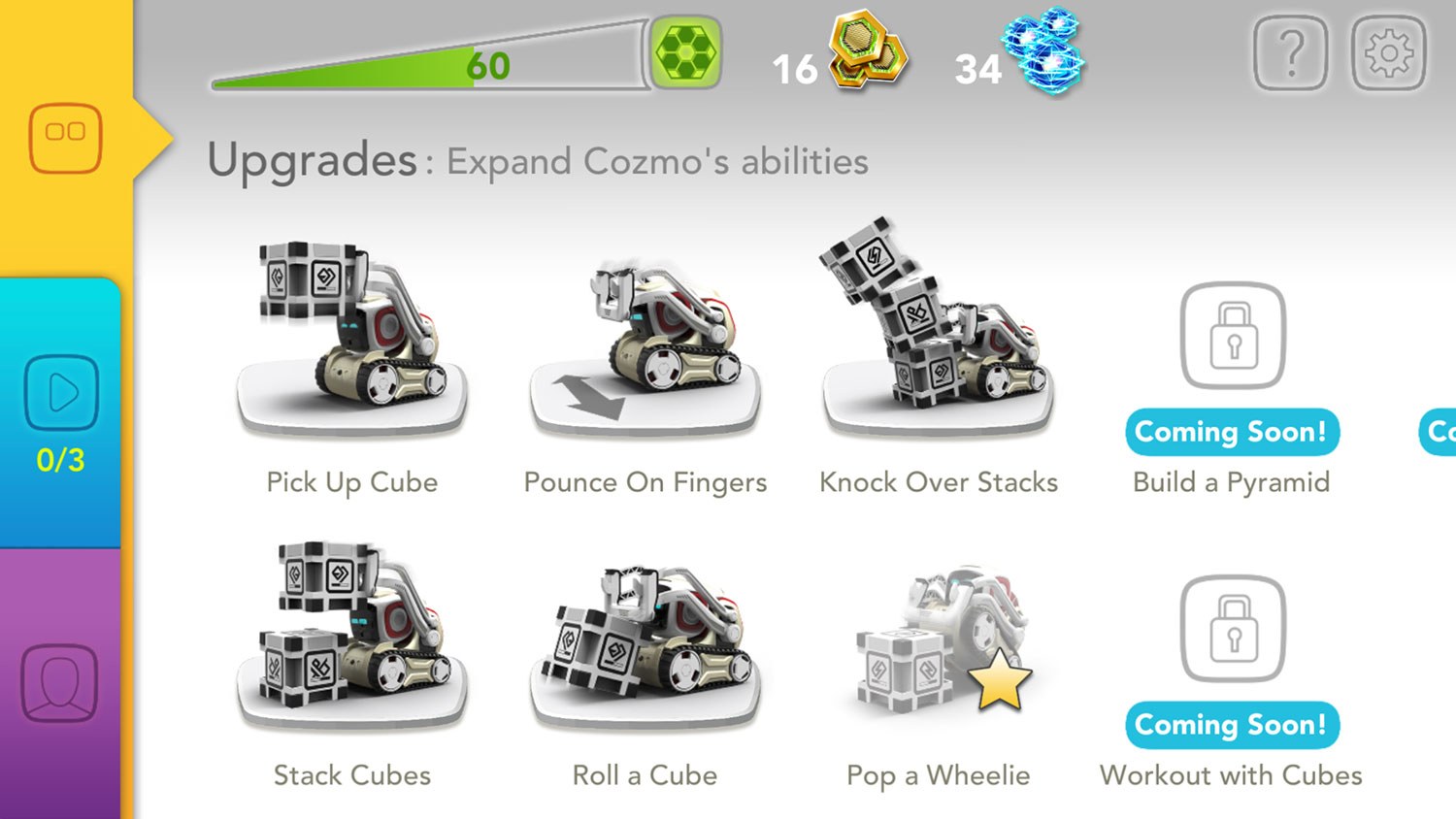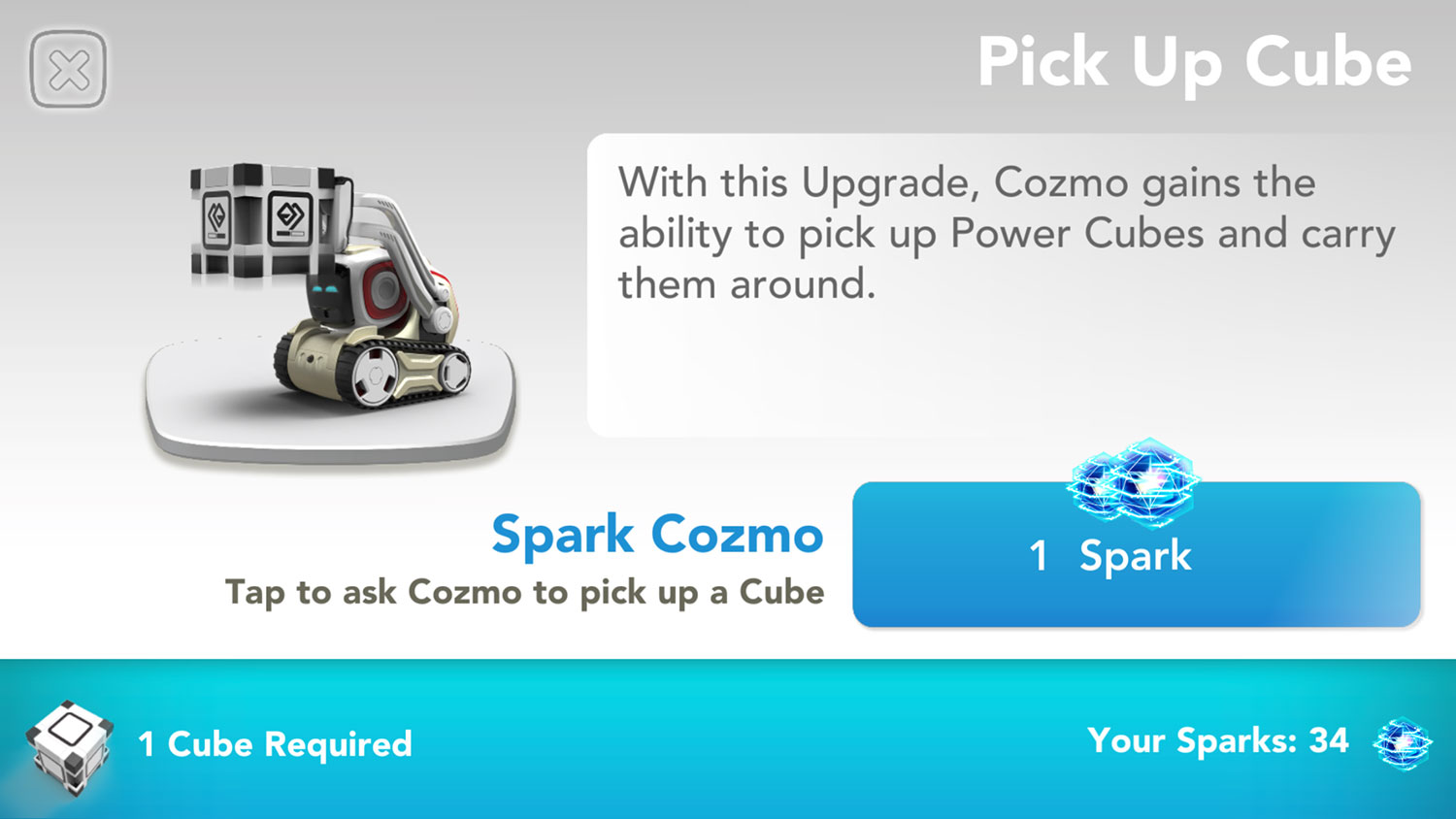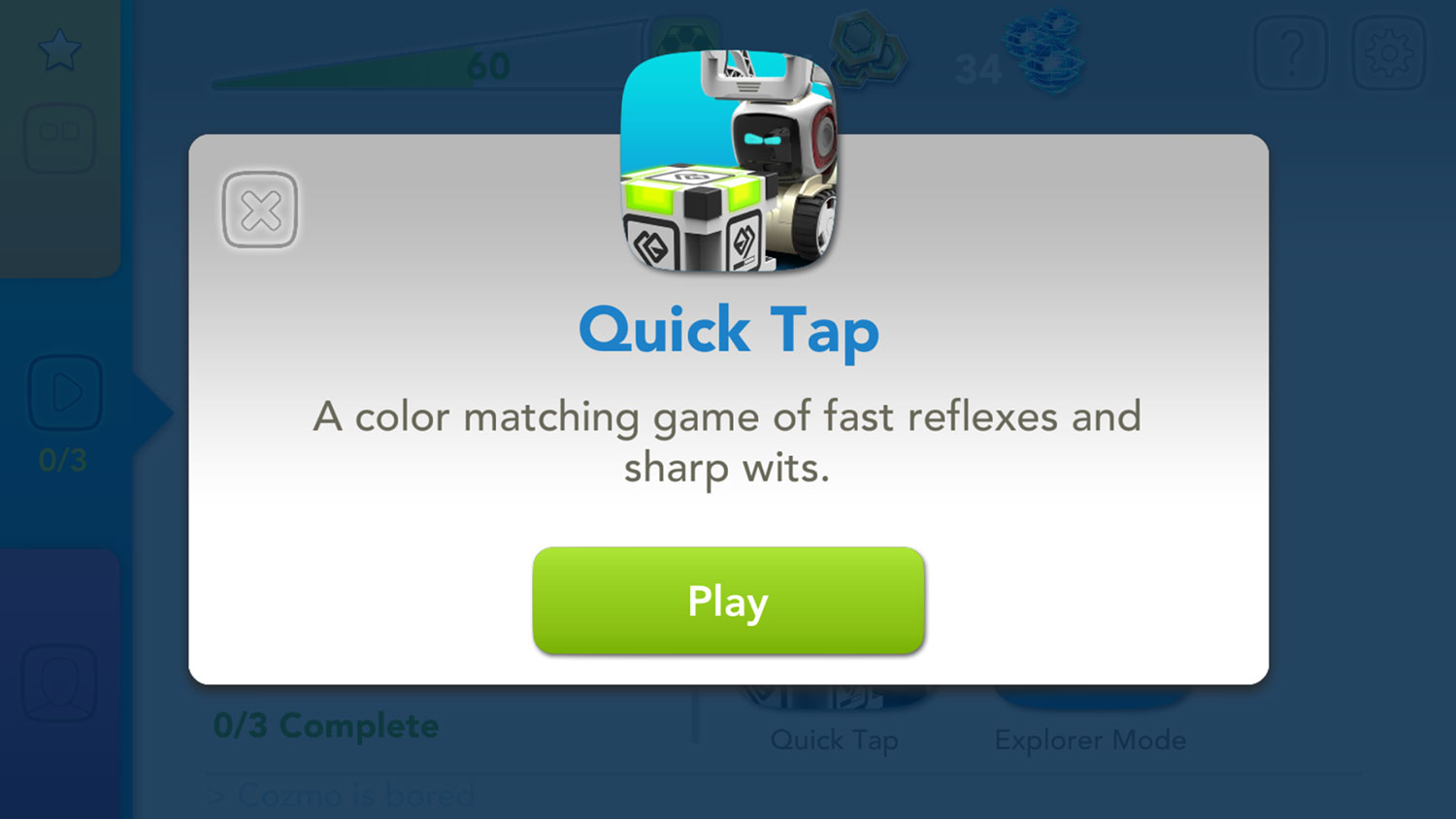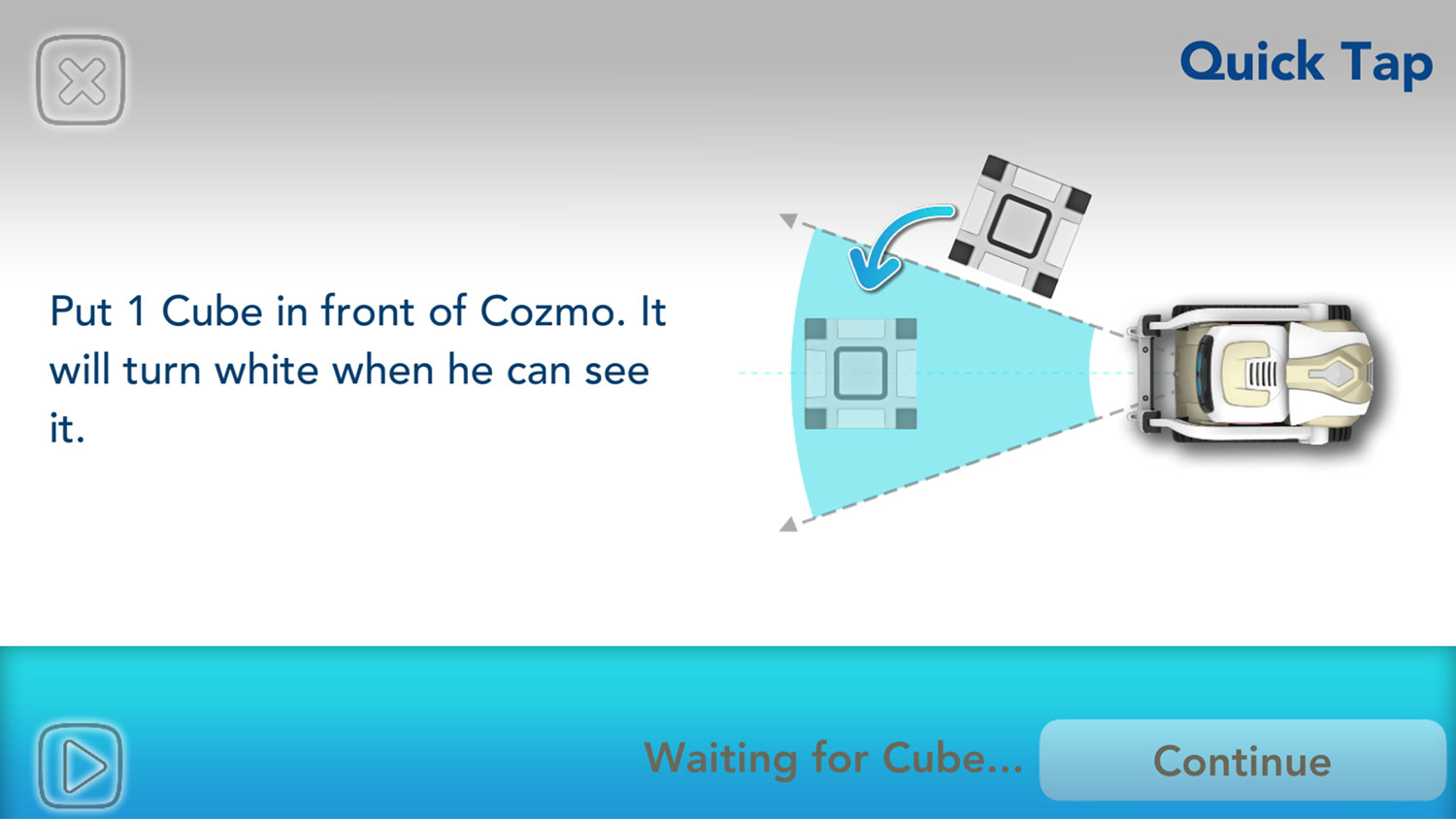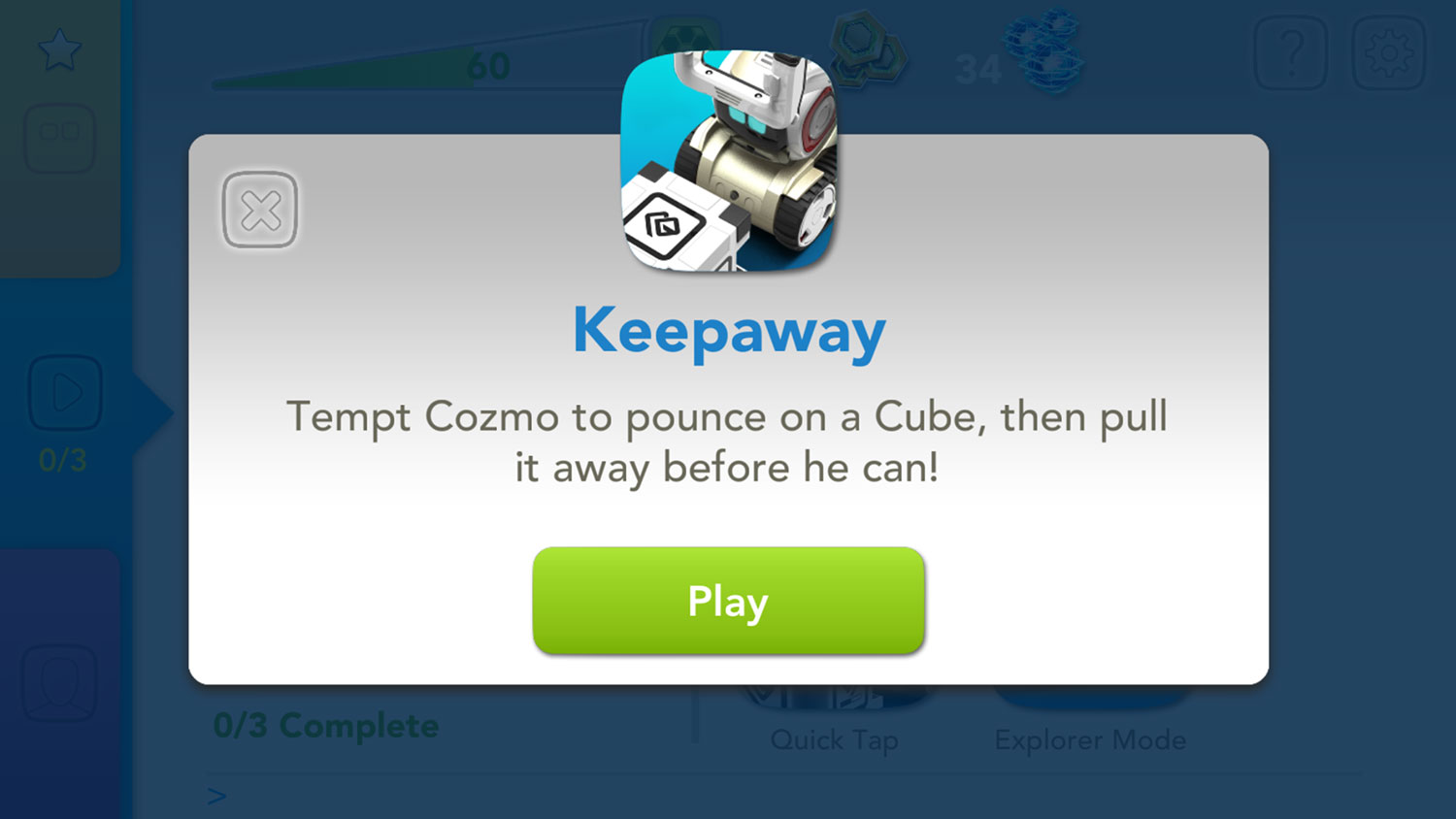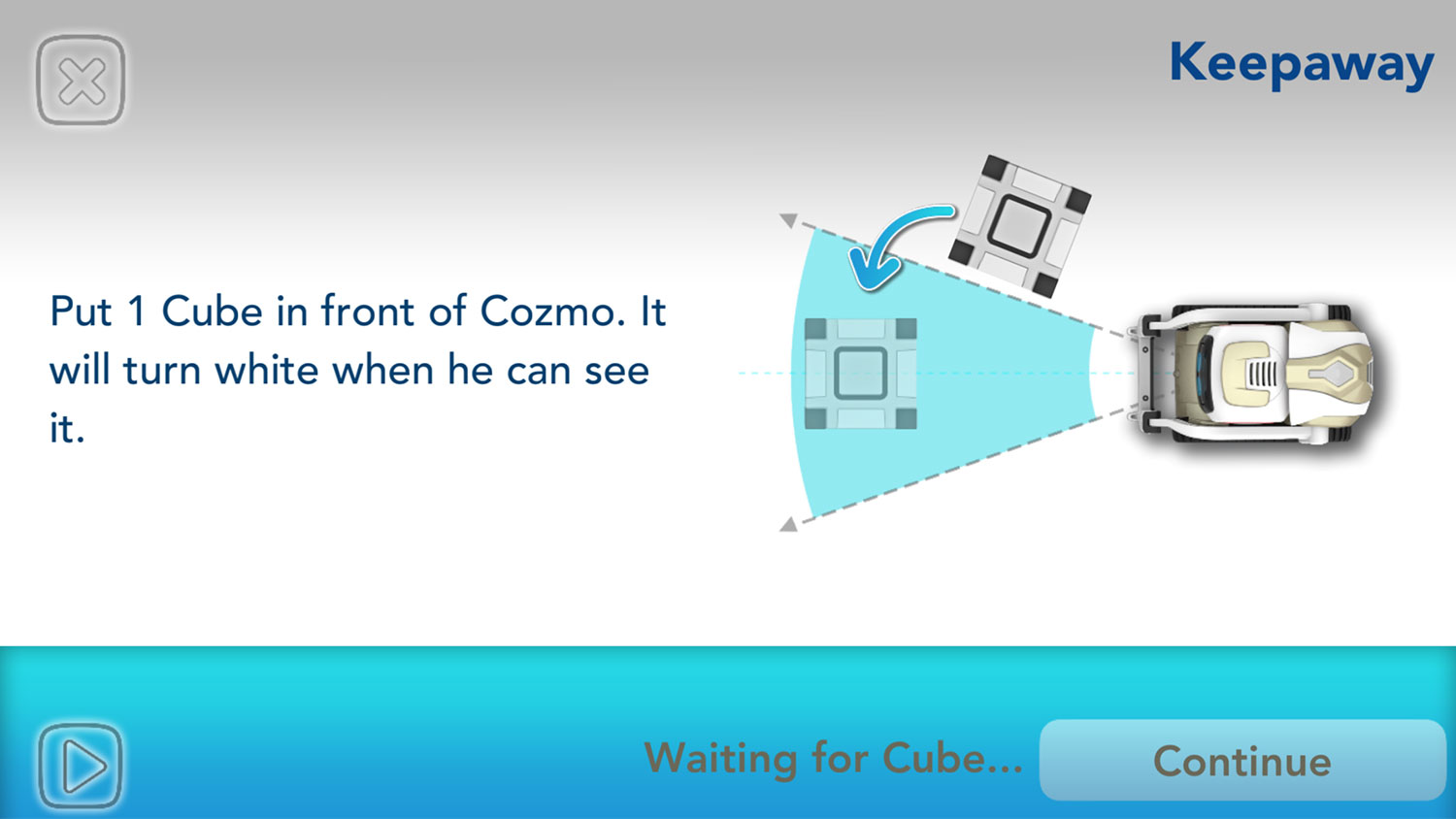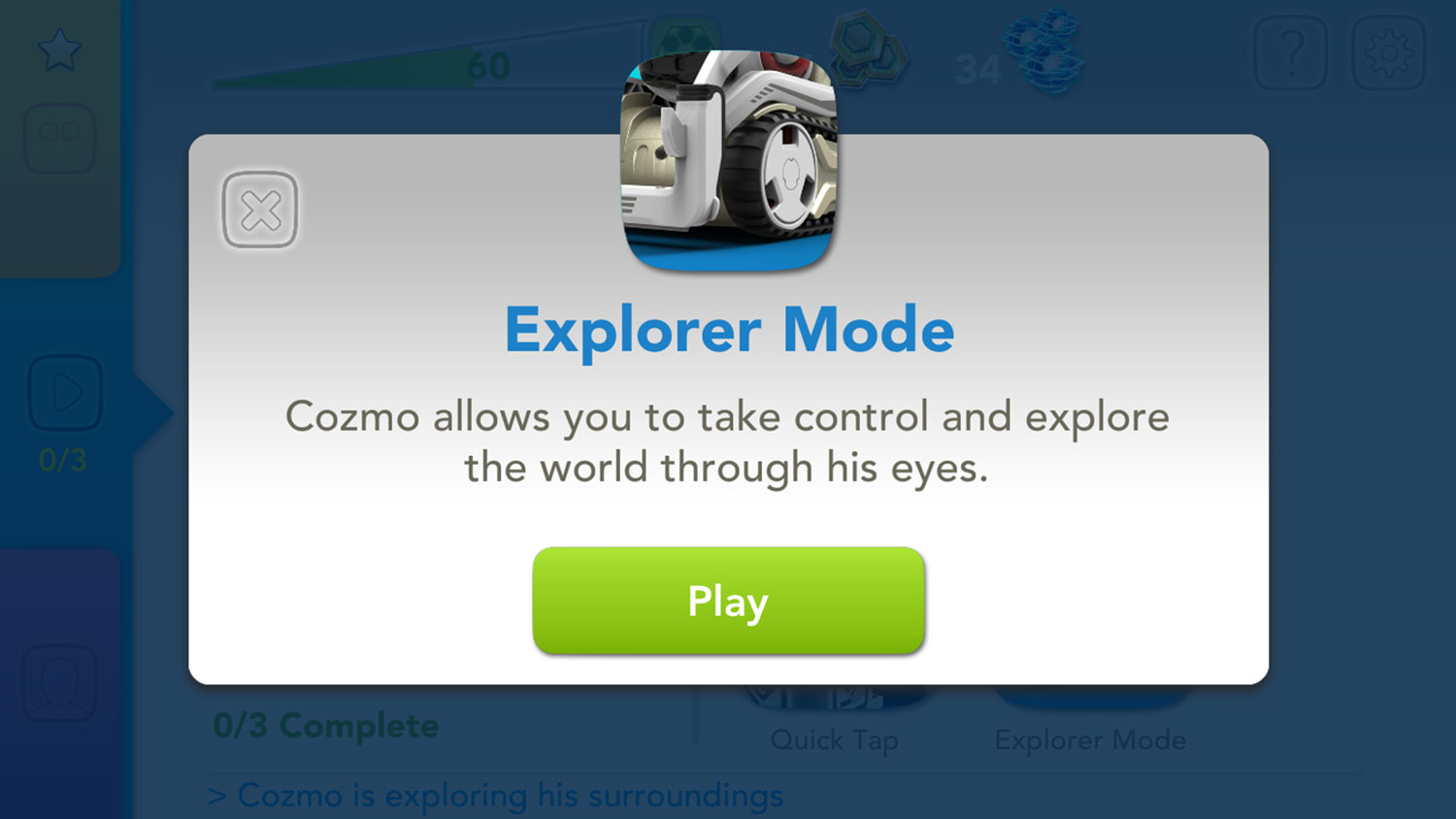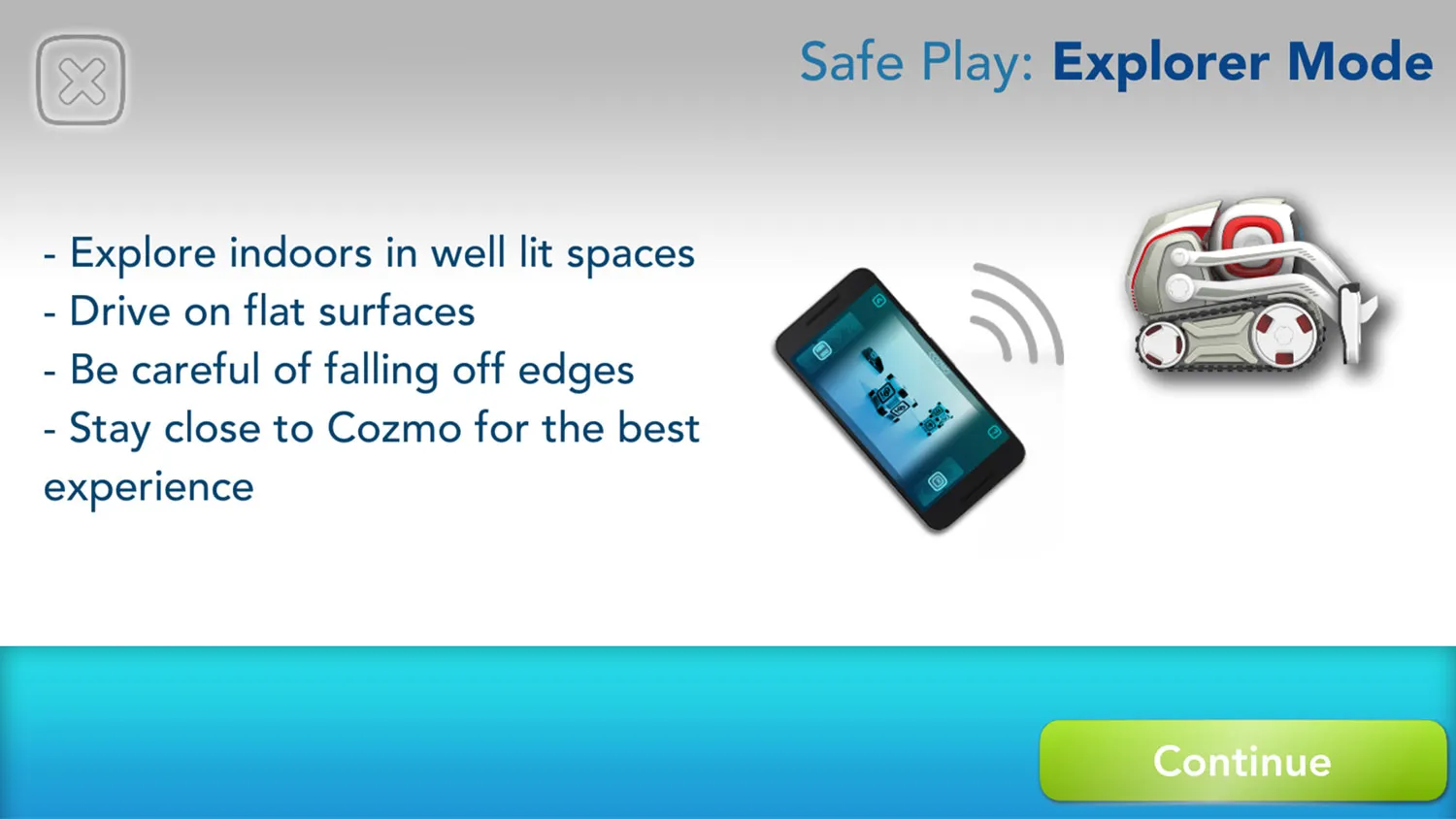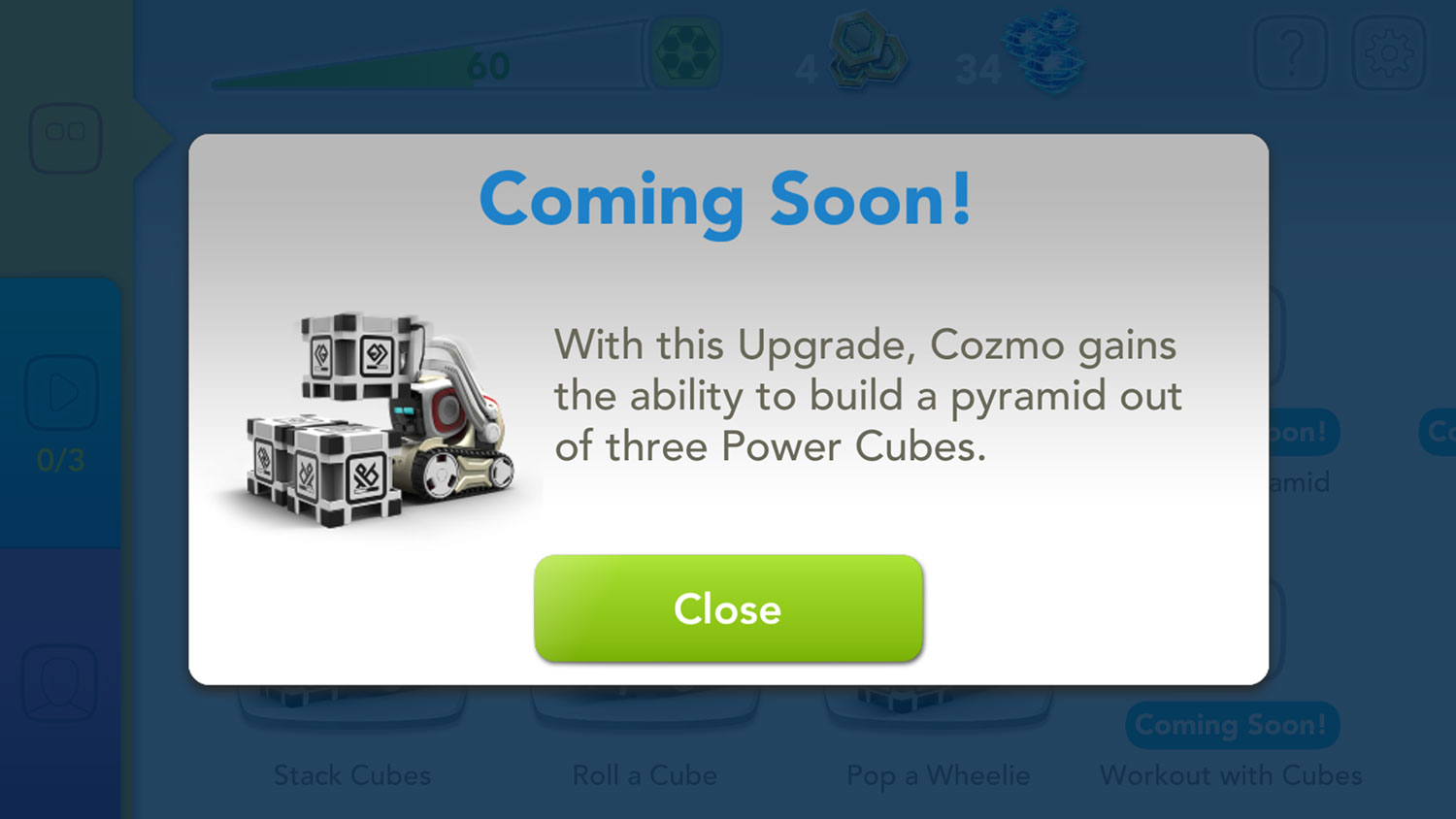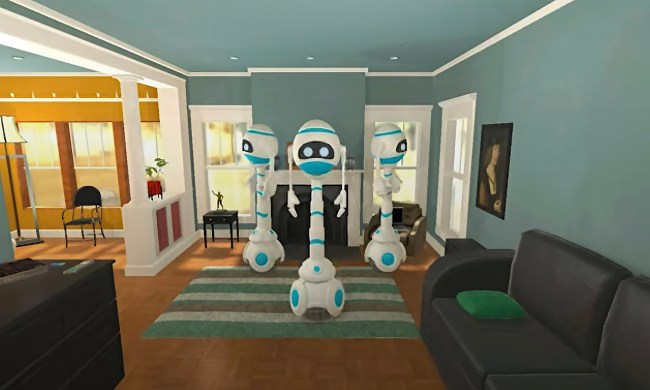
This product was featured in our Holiday Gift Guide! Check it out to find gift inspiration for everyone in your life.
We’ve updated the post with information about Cozmo’s international launch.
Cozmo, the product of San Francisco-based startup Anki, received plenty of press when it made its July debut. Since then, the firm has presented a demo of the artificially intelligent little robot’s software development kit (SDK), formally launched pre-orders, and prepared thousands of the AI-powered companions for shipment later this year. A few “escaped” early, though, including one that found its way to the New York offices of Digital Trends. For the better part of two weeks, we’ve been playing with it to find out just what makes it tick.
The answer is simpler than it might appear at first glance.
Release date and availability
Cozmo now comes in new colors — and is available in new territories.
On June 6, the adorable AI robot launched in Canada, the U.K., France, Germany, and Nordic Countries. Canadian customers, who can reserve a Cozmo at Best Buy Canada for $250, will begin to receive orders in July, followed by other territories in September.
Cozmo’s getting a fresh coat of paint, too. The Cozmo Collector’s Edition, which features a Cozmo robot with a liquid metal finish, will be sold exclusively at Toys “R” Us, and Anki.com, Best Buy Canada before rolling out to other countries in September.
You can get a Cozmo on Anki’s website for $180.
Creating an approachable robot toy
It’s been a long and winding road for Anki. The company spent years developing the AI-powered Overdrive series of remote-controlled slot cars. That garnered the firm praise from such titans as Apple CEO Tim Cook and former Disney President Michael Ovitz, plus sizeable investments from Index Ventures, Andreessen Horowitz, Two Sigma and JP Morgan. That capital — and more than four year’s worth of research — fueled Cozmo’s development.
Anki is hardly the first to imbue a toy with machine smarts, of course. Hello Barbie, ToyTalk’s internet-connected, voice-activated variant of Mattel’s iconic doll, remembers bits and pieces of past conversations in order to tailor future ones. Elemental Path’s cute, plushy Dino, meanwhile, taps IBM Watson to learn in real time to adapt its responses to the age and development of its user.
Cozmo is different in a few respects. It’s decidedly less cuddly than the AI-powered toys that have preceded it — its tiny, makeshift forklift of a body doesn’t exactly invite snuggling. It communicates not with words but in a cadre of robotic chirps, whoops, and tinny coos.
Cozmo feels no less “alive” than any voice-activated doll or internet-connected plushy.
Despite impersonal appearances, though, Cozmo feels no less “alive” than any voice-activated doll or internet-connected plushy. It bobs gleefully when it sees a face it remembers, and shivers in fear when held high above the ground. When Cozmo finds itself on the precipice of a table or desk, it takes a long, careful glance or two over the edge before backing away cautiously. Cozmo even has its bad days: when it’s frustrated or upset, it throws a toddler’s worth of squawks and screeches.
More than 325 individual sensors, moving parts, and electrical components work together to deliver Cozmo’s range of emotions. Four motors, one per tread and two on either side of the robot’s lifting lever, supply Cozmo thrust. Motion-sensing gyroscopes and accelerometers help the bot detect when it’s being hoisted from the ground. A built-in camera allows Cozmo to detect objects, faces, and what Anki calls Power Cubes, or three battery-powered light-up peripherals that serve as Cozmo’s primary means of orientation.
But most crucial to Cozmo’s ability to convey its emotional state is the OLED panel embedded in its front. It’s typically populated with two, pupil-less, pixelated eyes capable of a range of expressions: they widen to reflect surprise, for instance, and narrow to indicate concern.
They’re the product of Pixar animator Carlos Baena, and it’s seamless work. At times, the eyes are enough to give the impression of true sentience, even. When Cozmo’s fully charged, it sleepily opens its electronic eyes before beginning to move about its surroundings. When it sees a person it doesn’t recognize, it responds tepidly, roving nervously backward and forward on its treads. If you leave it alone long enough — it explores its surroundings, periodically between Power Cubes and around cords, wallets, coins, and other obstacles.
Most interactions with Cozmo are initiated with the app, which you also use to set up the little bot for the very first time. After placing the unit its charging cradle and plugging the attached USB cord into the wall, you connect to the Cozmo via Wi-Fi. And that’s when the fun begins.
It’s play time
Open the app, and you’ll see an ever-rotating list of daily challenges. A task one day might involve winning a certain number games in a row, for example, or instructing Cozmo to perform a trick. Completing those goals earns you in-game currency called Energy, which progressively fills a meter. Filling it generates Bits, which can be used to unlock new abilities, and Sparks, which trigger those abilities.
It’s a dream of affordable, fun artificial intelligence not yet fully realized.
Most of Cozmo’s coolest tricks and games are initially locked behind those somewhat arbitrary systems, but it doesn’t take long to unlock the bot’s full potential. One stunt in Cozmo’s bag of tricks is consistently impressive: the ability to align its forklift-like arm with a Power Cube, lift said cube in the air, and stack it precisely on top of another. Another trick, aptly named Pounce on Fingers, has Cozmo bring its upraised arm quickly down on any object in range of its camera.
Far more involved are what Anki calls “Cozmo Apps,” or a collection of social games and activities. The first, Meet Cozmo, is introductory in nature: after entering the name of your choice, Cozmo points its head in your direction and scans for distinguishing facial features. Once it’s captured your complexion, it vocalizes the name you’ve entered in mechanical speech that sounds like Wall-E.
Cozmo’s other apps take the form of games. There’s Keepaway, which tasks you with moving a Power Cube quickly from Cozmo’s dexterous arm. And there’s Quick Tap, which is slightly more involved: Cozmo’s given a Power Cube and you’re given another; both illuminate in color combinations of unpredictable sorts; and, if they match in hue, you’re given milliseconds to tap your Cube before Cozmo manages to tap its own.
Cozmo’s AI promise is perhaps best encapsulated by its ambient mode. Leave the ‘bot for a bit and it’ll begin to traverse a table or room with a surprising degree of independence, moving blocks around the corners of walls and exclaiming in surprise when it encounters an unfamiliar object. Every once in a while, it’ll cutely nudge a nearby party to play a game, a request which appears as a pop-up notification in the smartphone companion app.
The limits of AI
It’s that sentimentality that’s the source of both Cozmo’s strength and weakness. The bot’s realistic — or recognizable, at the very least — reactions endear you to it. It takes restraint not to comfort Cozmo when it’s visibly saddened, or revel in its unbridled joy when it completes a tower of Power Cubes. But it doesn’t take long before its responses begin to become predictable. Soon, Cozmo’s reaction to a losing game of Keepaway is no longer the mystery it once was, and neither is its reaction to new faces, or preferences like its favorite game, or its solitary activity of choice in ambient mode. As the veneer of sentience crumbles, Cozmo becomes far less compelling.
It’s that sentimentality that’s the source of both Cozmo’s strength and weakness.
Perhaps equally as disappointing as Cozmo’s emotional limitations are its limited library of apps, games, and abilities. Keepaway and Quick Tap, the sole two games in the robot’s library, are entertaining in short bursts, but before long become repetitive. While it’s undeniably fun to see Cozmo stack cubes with incredible precision, the novelty wears thin after a while — as it does with Cozmo’s handful of other mechanical feats.
All that’s to say that Cozmo could use a bit of refinement, and for a toy that retails for $180, that’s reason for pause. However, the bot’s value depends largely on expectations. You won’t find paradigm-shifting intelligence in Cozmo. It’s a little more responsive than your average toy robot, but it won’t pass for a living, breathing thing anytime soon. What you will find is a really cool toy that performs tricks, plays games, and convincingly approximates a handful of emotions. For some folks, that may be worth the price of admission.
A promising future
There’s the upcoming software development kit (SDK) to consider, of course. Cozmo launches with open programming hooks that’ll allow those with the technical know-how to extend the ‘bot’s capabilities far beyond those with which it ships. The goal, Anki president and co-founder Hanns Tappeiner told Digital Trends earlier this year, is to put “incredibly powerful resources” at the fingertips of tinkerers.
One coding function, NumFaces, fires up “thousands of lines of code” to trigger Cozmo’s face detection. The plan is to release the platform in phases. Phase 1 is geared toward experienced programmers; phase 2, due out later this year, will support kid-friendly, novice languages like Scratch; and phase 3 will introduce a means of installing third-party Cozmo Apps.
For those capable of crafting such routines, the possibilities are nearly endless. Anki has exposed Cozmo’s hardware in its entirety. You can have it patrol a kitchen counter and trigger a connected coffee maker when it detects a face, or have it watch the living room couch and dim the lights when someone takes a seat.
If programming isn’t your thing, though, Cozmo’s a harder sell. In July, Tappeiner told The Wall Street Journal that Cozmo would gain “story-based” activities and “a few friends” in the weeks and months ahead. The buying decision, then, might come down to whether or not you’re willing to play the waiting game.
There’s no doubt that Cozmo is a breakthrough, but it’s the cornerstone of potentially more impressive work to come. Maybe software updates will improve Cozmo’s emotional range substantially. Maybe new games and apps will have greater longevity than the current crop. But for now, it’s a dream of affordable, fun artificial intelligence not yet fully realized.




